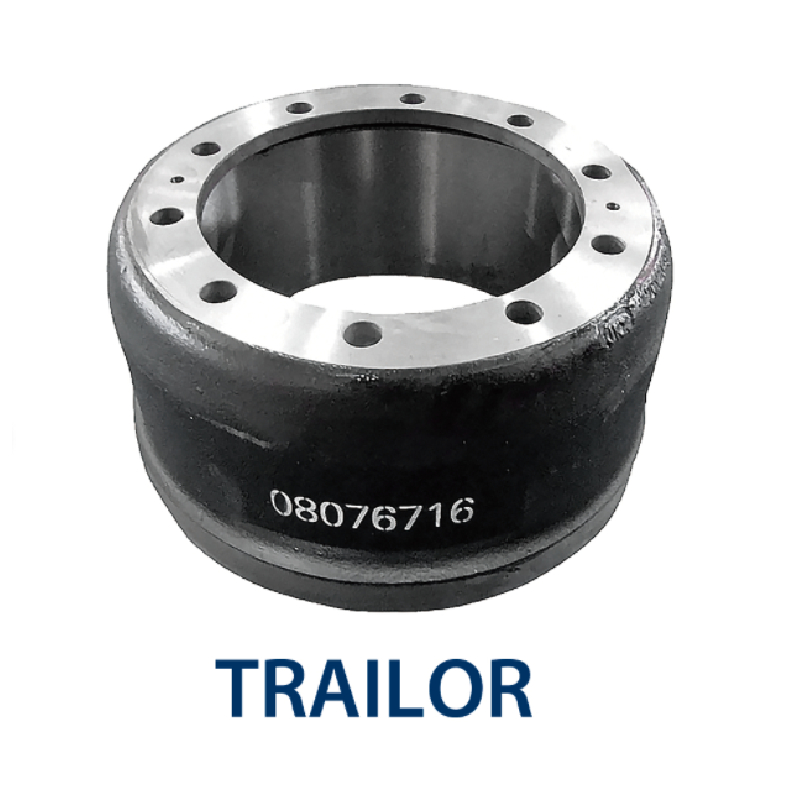10 月 . 13, 2024 22:37 Back to list
Tips for Removing a Stuck Brake Drum Effectively and Safely
Removing a stuck brake drum can sometimes feel like a daunting task, but with the right techniques and tools, you can effectively tackle the job. Brake drums can become stuck due to rust, corrosion, or the accumulation of brake dust and debris over time. Here, we will guide you through a series of steps to successfully remove a stuck brake drum. Remember to always prioritize safety by wearing gloves and eye protection during the process.
Step 1 Gather Your Tools
First and foremost, you'll need to gather the necessary tools before you begin the removal process. Common tools that can assist you include
- A jack and jack stands - A lug wrench - A rubber mallet - Brake cleaner - A penetrating oil (like WD-40 or PB Blaster) - A drum puller (if needed)
Step 2 Secure the Vehicle
Before you start working, make sure the vehicle is parked on a flat surface, the engine is off, and the parking brake is engaged. Using the lug wrench, remove the wheel covering the brake drum. Loosen the lug nuts, then raise the vehicle using the jack and secure it with jack stands. This ensures that you have a safe environment to work in.
Step 3 Inspect the Brake Drum
Once the wheel is off, visually inspect the brake drum for any signs of damage or extensive wear. You may notice rust or corrosion along the edges, which could be contributing to its stuck condition. If there are any significant issues, you may want to consider replacing the drum.
Step 4 Apply Penetrating Oil
To break the bond between the drum and the hub, apply penetrating oil around the interface where the drum meets the hub. Allow it to sit for at least 15 to 30 minutes. This will help to loosen any rust or debris that might be causing the drum to stick. Be generous with the oil, as it may need time to seep into the corrosion.
Step 5 Use a Rubber Mallet
how to get a brake drum off that is stuck

After the penetrating oil has had time to work, take a rubber mallet and gently tap around the edge of the brake drum. This can help to dislodge any rust or debris that might be holding it in place. Avoid using a metal hammer, as this could cause damage to the drum. If the drum still does not budge, you can use a bit more force, but be careful to avoid damaging the surrounding components.
Step 6 Utilize a Drum Puller
If the drum remains stuck even after malleting, a drum puller may be necessary. A drum puller is a specialized tool designed to grip the drum and pull it off with even pressure. Attach the puller’s arms to the drum and tighten the center bolt gradually. Be cautious during this process; too much force too quickly can compromise the integrity of the drum or other attached components.
Step 7 Check for Retaining Screws
Some brake drums have retaining screws that secure them to the hub. If your drum is equipped with these screws, ensure they are removed before attempting to pull the drum off. These can sometimes be rusted in place, so a bit of penetrating oil and a proper screwdriver can help in removing them.
Step 8 Final Removal
Once all components are removed, the penetrating oil has worked, and adequate force has been applied with the drum puller, you should be able to remove the brake drum. If necessary, continue to carefully apply tapping with the rubber mallet to loosen stubborn areas.
Step 9 Clean and Maintain
After successfully removing the drum, take the opportunity to clean the brake components, including the shoes and spring assembly, using brake cleaner. Ensure that the new surface is free of debris and rust when installing a new drum. Lubricate any moving parts where recommended and ensure everything is reassembled properly.
Conclusion
Removing a stuck brake drum can take some patience and the right approach. It’s essential to prioritize safety during the process and take your time with each step. If you encounter persistent trouble, it may be worth consulting with a professional mechanic to avoid damage to your vehicle. Remember, regular maintenance can help prevent brake components from becoming stuck in the future.
-
Brake Drum for Kamaz Trucks Durable OEM Replacement & High Performance
NewsMay.30,2025
-
Brake Drum Man High-Quality Drum Brake & Shoe Solutions
NewsMay.30,2025
-
High-Performance Brake Drum for Kamaz Trucks Durable Drum Brake Components
NewsMay.29,2025
-
Brake Drum Man High-Quality Drum Brake Drums & Brake Shoes
NewsMay.29,2025
-
Brake Drum MAZ High-Performance & Durable Replacement Parts
NewsMay.29,2025
-
heavy truck brake drums
NewsMar.07,2025
